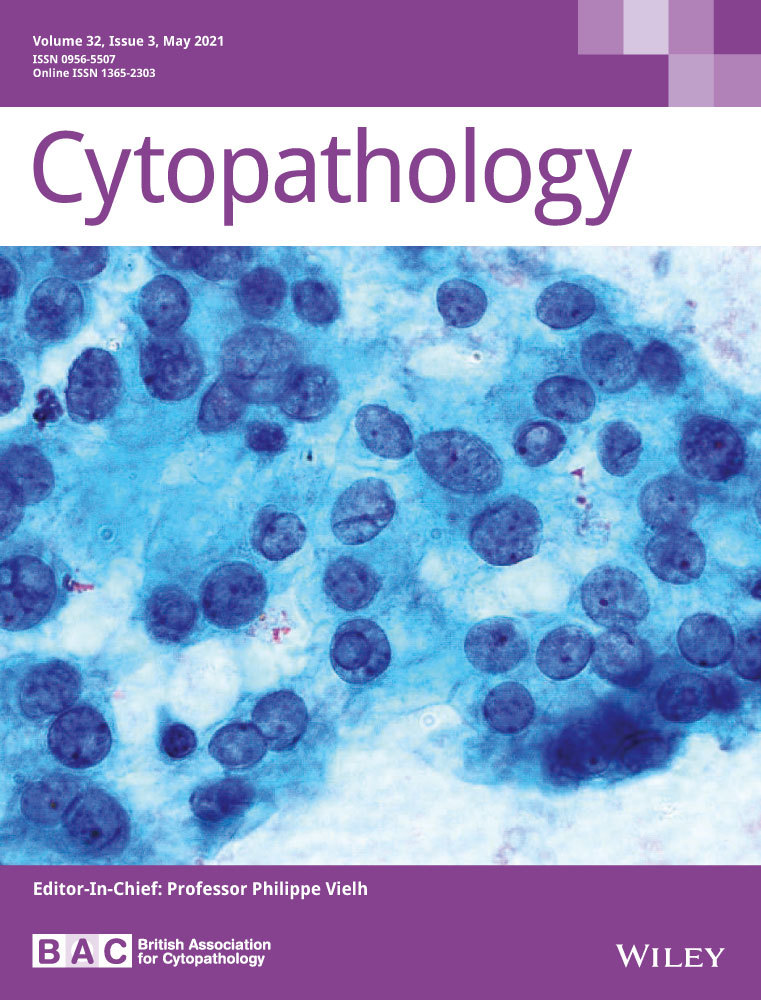Optimising rapid on-site evaluation-assisted endobronchial ultrasound-guided transbronchial needle aspiration of mediastinal lymph nodes: The real-time cytopathology intervention process
Abstract
Introduction
Lymph node sampling by endobronchial ultrasound-guided transbronchial needle aspiration (EBUS-TBNA) is the state of art procedure for staging the mediastinum and hilar regions in lung cancer patients. Our experience of implementing the real-time cytopathology intervention (RTCI) process for intraoperative EBUS-TBNAs is presented. This study is aimed to describe in detail the RTCI process for EBUS-TBNAs, and assess its utility and diagnostic yield before and after its implementation in parallel to conventional rapid on-site evaluation (c-ROSE).
Methods
A retrospective review of all EBUS-TBNAs between July 2016 and July 2017 at the University of Rochester Medical Center was performed. Final diagnoses, patient clinical data, and number of non-diagnostic samples (NDS) were reviewed. The numbers of NDS obtained from EBUS-TBNAs with no cytology assistance (NCA), with RTCI and with c-ROSE were analysed.
Results
Non-diagnostic lymph node samples were found in 20 out of 116 (17%), three out of 114 (2.6%) and 33 out of 286 (11.5%) cases with NCA, RTCI and c-ROSE, respectively. Application of statistical analysis revealed significant difference in the NDS between the groups of cases in the operating room with NCA and RTCI (P = .005). The different settings and variables between the cases performed using RTCI in the operating room and those assisted with c-ROSE in the bronchoscopy suite preclude legitimate comparison.
Conclusion
Our results indicate that the use of RTCI could yield a significantly low proportion of NDS when assisting EBUS-TBNA of mediastinal and hilar lymph node for lung cancer patients enhancing the diagnostic efficiency of the procedure.
Abstract
When cytology assistance for endobronchial ultrasound-guided transbronchial needle aspiration (EBUS-TBNA) procedures is performed as an interactive dynamic systematic process between cytopathologists and performing physicians, it can optimise the efficiency of EBUS-TBNA for mediastinal lymph node sampling, particularly in institutions with lower volumes of EBUS-TBNAs and incidences of lung cancer. Real-time cytopathology intervention is centred on actions and interactions between the cytopathologist and the physician performing the procedure, using microscopic findings as the dynamic tool to guide and adjust the EBUS-TBNA procedure for optimal pathology assessment. The assistance of EBUS-TBNA with the real-time cytopathology intervention process could potentially impact on diagnostic accuracy, use of institutional resources, and procurement of adequate material for ancillary and molecular tests.
CONFLICT OF INTEREST
The authors have no conflicts of interest to declare.
Open Research
DATA AVAILABILITY STATEMENT
The data that support the findings of this study are available on request from the corresponding author. The data are not publicly available due to privacy or ethical restrictions.




